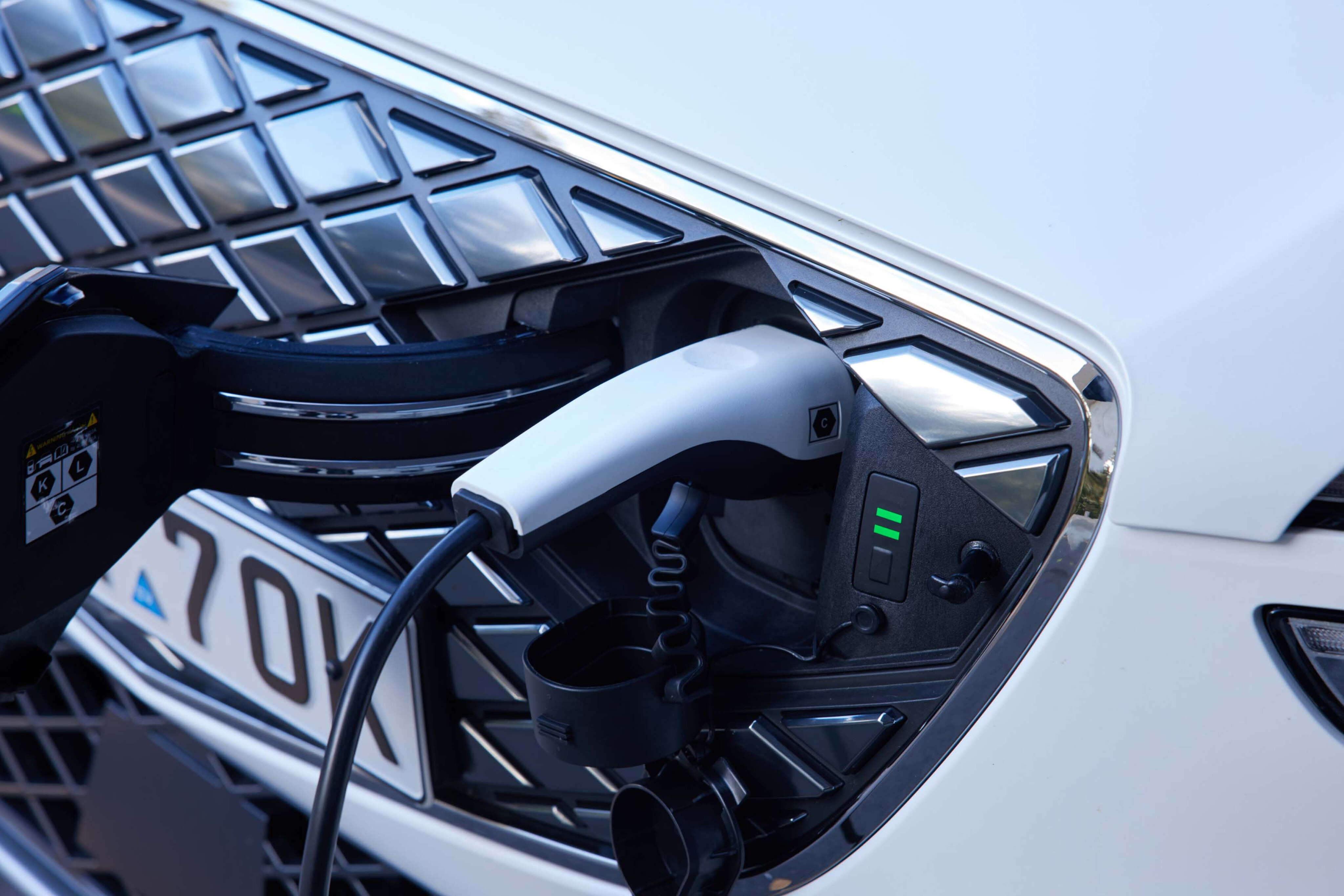
As Australia's electric vehicle market grows, you’ll read more about kilowatt-hours (kWh) – the EV equivalent of fuel litres (L).
That’s because the amount of power an EV battery can store dictates how far you can drive before needing to plug in for a recharge, just like the volume of a fuel tank.
But, it's also important to also consider how long it takes to charge – especially when you venture on long road trips that are beyond the driving range limits of an EV and require public charging stops.
Here’s what the numbers mean and what you need to look for when considering the electric switch.
JUMP AHEAD
This is a long story, but our index of jump links right here will help you get to the parts you need most.
- 🔢 What’s a kilowatt-hour (kWh)?
- ⭐️ 80 is the golden number
- 🪫 Battery design
- 🔌 Charging power (kW) and force (V)
- AC⚡DC
- ⏰ Fastest-charging EVs in 30 minutes or less
- 🤔 How long does it take to charge an EV and how much?
🔋 Every fastest-charging EV in Australia, by max DC rate
- 💯 Knowledge is power
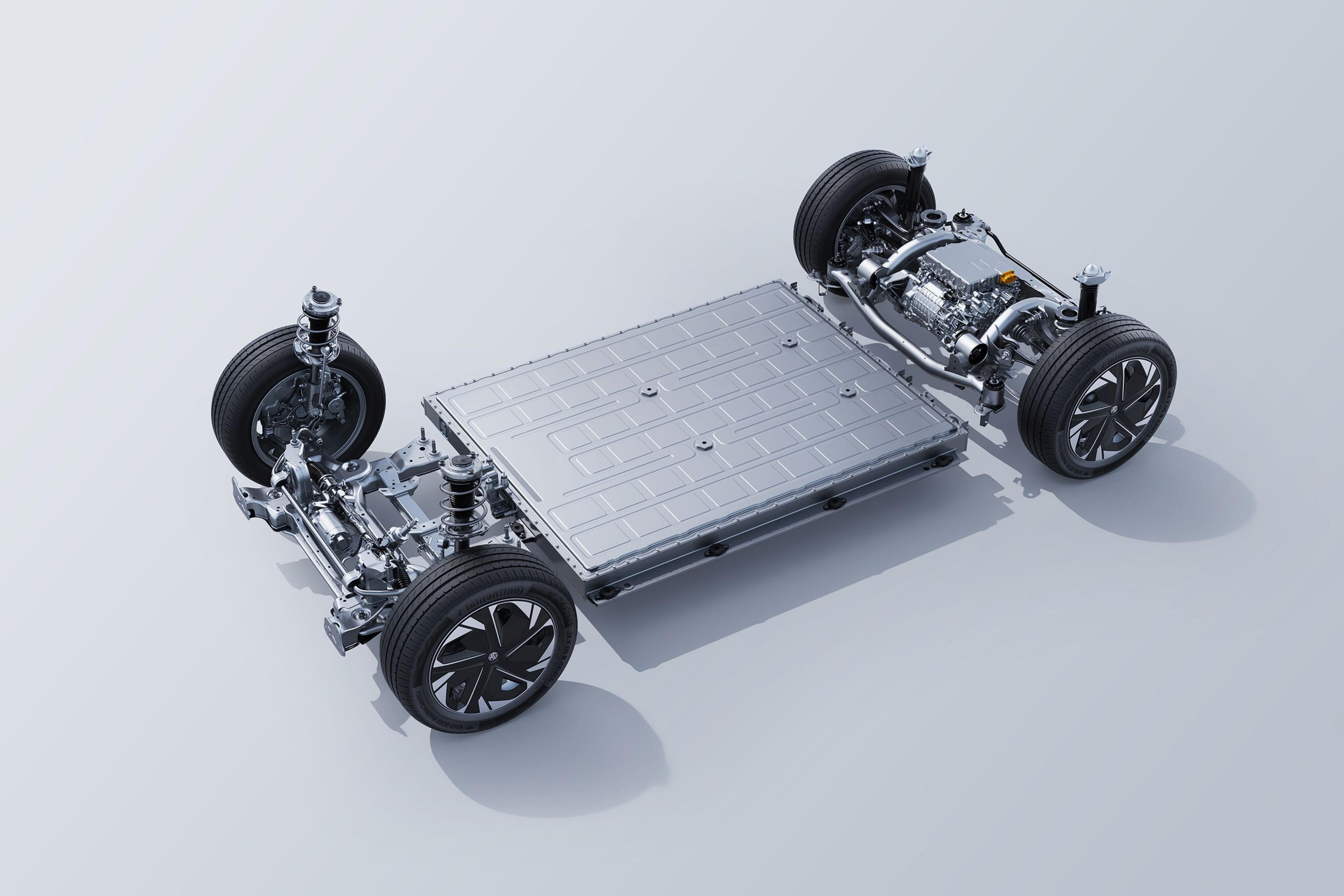
🔢 What’s a kilowatt-hour (kWh)?
For most buyers, it's not necessary to know the physics and science behind a kilowatt-hour (kWh) any more than you need to understand the calculation of a combustion engine’s power figures.
Put simply, a kWh is a unit of energy just like a calorie or joule, but one that’s particularly applicable to electric vehicle batteries.
The higher the number, the more energy the battery can absorb via charging and then release when required to drive the vehicle for (theoretically) longer range on one charge.
👉 Gross vs net: Only look at one…
There are two battery size numbers – nominal (gross) and usable (net). But, only the latter should be looked at since it's the actual energy that can be stored and used by owners.
For context, the BMW iX large electric SUV is available with a 112kWh (gross) battery, while the Mazda MX-30 is 35.5kWh (gross). However, the actual usable sizes are 105kWh and 30kWh respectively.
This is because manufacturers implement bottom and top ‘buffers’ to help protect the battery health and ensure safety.
Unfortunately, some carmakers only quote the gross number in marketing and press material – which is misleading.
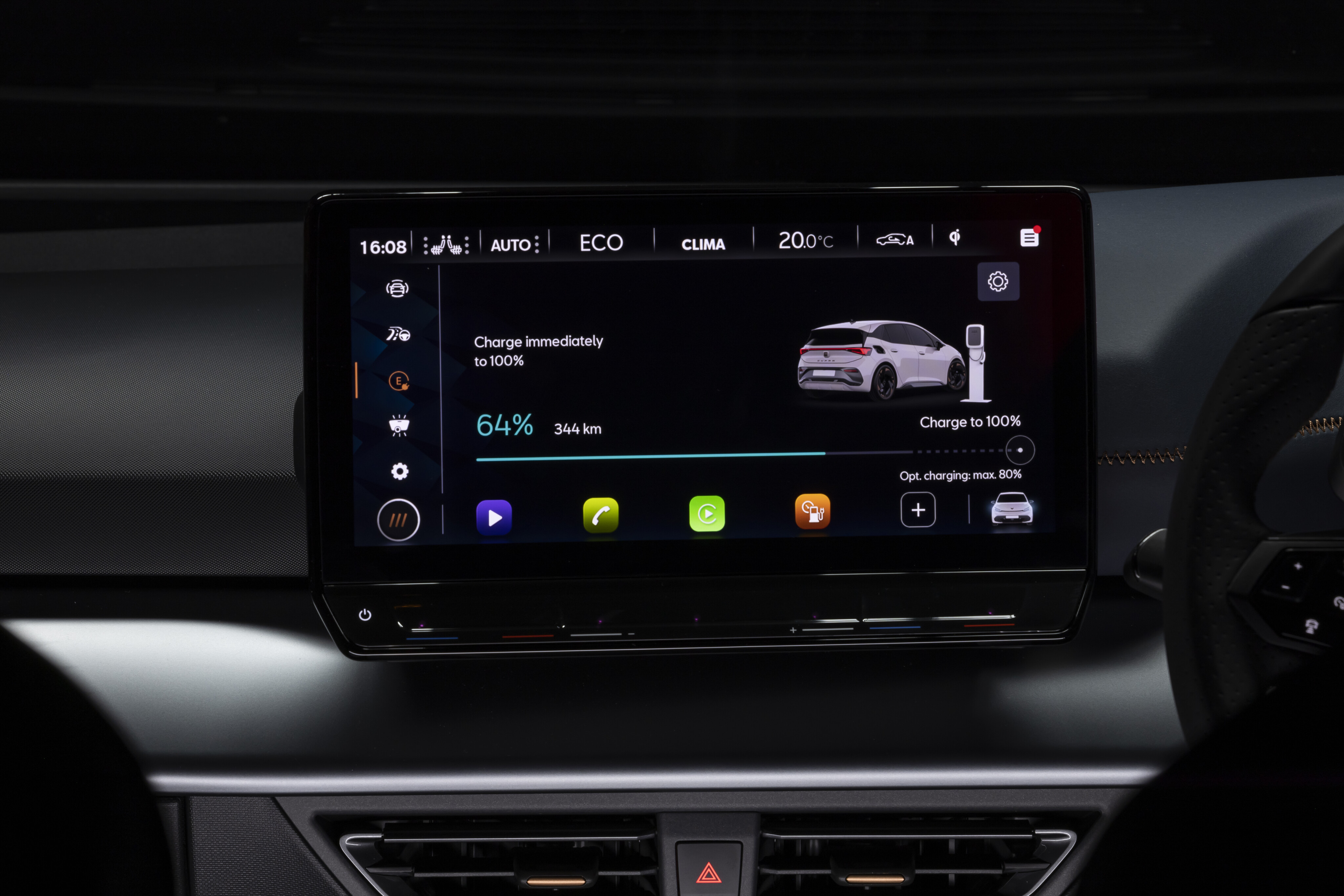
⭐️ 80 is the golden number
Charging a battery is comparable to filling a drink bottle, where you slow down the pouring pressure to fill the top-end, without overflowing.
After the 80 per cent mark, charging speed slows dramatically – regardless of the battery type. That’s why EV manufacturers often refer to an 80 per cent charge time, as this offers the best range-for-time value.
For example, plugging in from 10 to 80 per cent typically takes the same time as the last 20 going from 80 to 100 per cent – which effectively doubles your waiting time for not much range gain, unless a full charge is necessary on a long-distance road trip.
❗️ Why 80 per cent is critical
Importantly, limiting everyday charging to 80 per cent is the general rule to maintain good battery health for lithium-ion packs, as cells are more stressed at the top- and bottom-end – especially when kept for extended periods.
However, the emergence of lithium-iron-phosphate (LFP) cathodes in entry-level EVs generally allows for regular 100 per cent charging, with less excessive degradation concerns.
Car manufacturers have different charge limit recommendations (for example, Volvo and Polestar suggest 90 per cent for their lithium-ion battery EVs), so follow the owner’s manual.
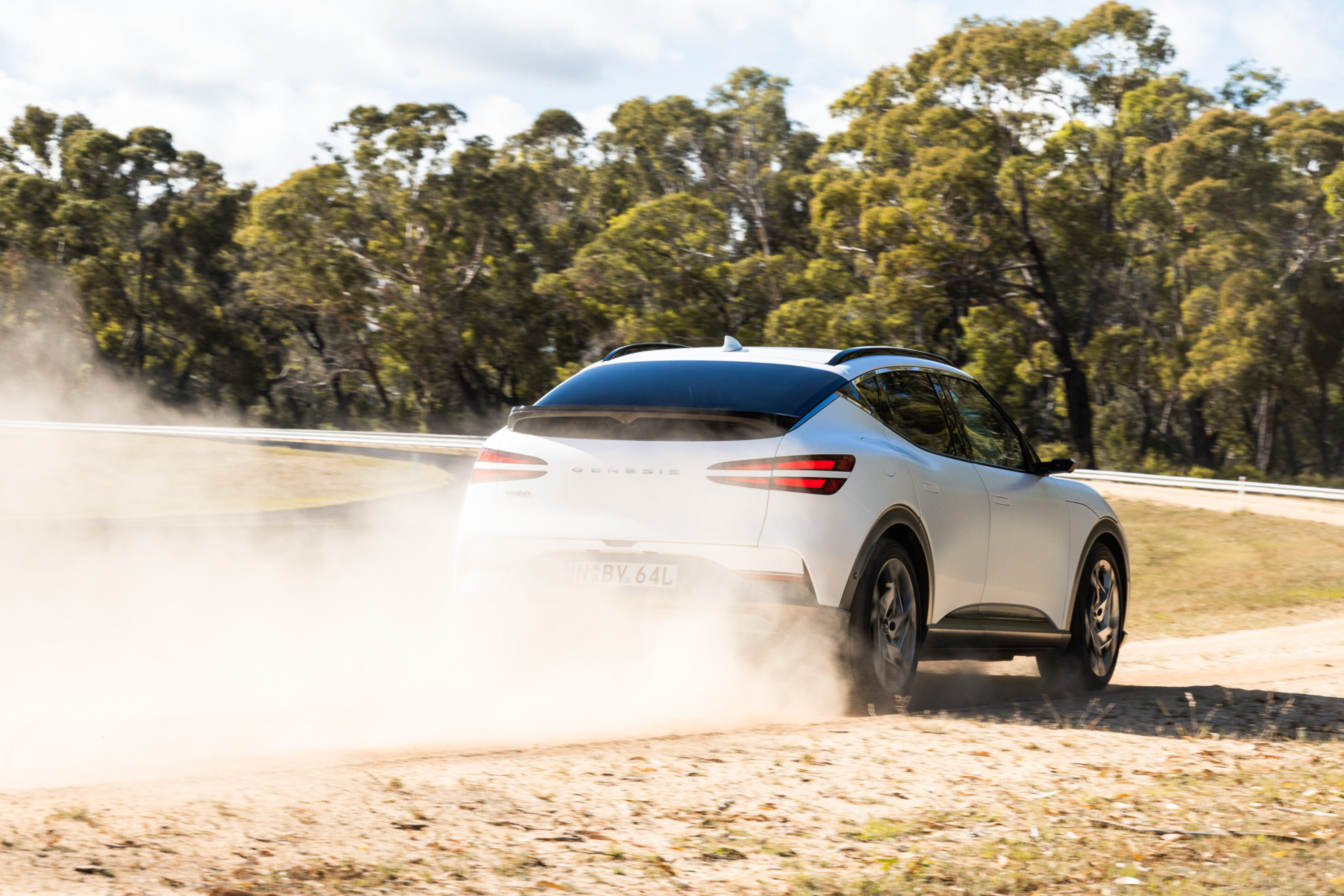
🪫 Battery design
All EV batteries feature sophisticated active and passive cooling systems – via battery management system (BMS) software – to control the significant amount of heat generated by the fast charging and discharging.
Cooling systems can also be reversed to warm the battery during very cold weather.
Some EVs, such as the BYD Atto 3, Tesla Model 3 and Genesis GV60, include heat pumps as standard – which is a significantly more efficient way to heat or cool the interior air-conditioning system and the battery by repurposing waste heat from the electric drive unit.
How efficiently the cooling system moves heat away from the individual battery cells can affect the charging speed.

🤷 Why higher numbers isn’t always fastest
It's important to note that charging providers and carmakers only quote the maximum charge rate number in kilowatts (kW).
In reality on a public DC fast charging station, owners will only hit the advertised peak speed under optimum conditions. Charging speeds can slow dramatically if the heat builds up too fast (usually in summer climates).
The BMS will slow down the charging input speeds over time as the battery fills up to avoid stressing the cells and causing excessive degradation.
For example, as demonstrated by the Audi Q8 E-Tron's charging curve above, an EV with a 150kW DC peak charging rate could actually take longer to charge compared to an EV with an 80kW DC capability – if the former’s BMS throttles speeds significantly over time, whereas the latter’s BMS sustains higher speeds for longer even if the initial peak isn't as fast.
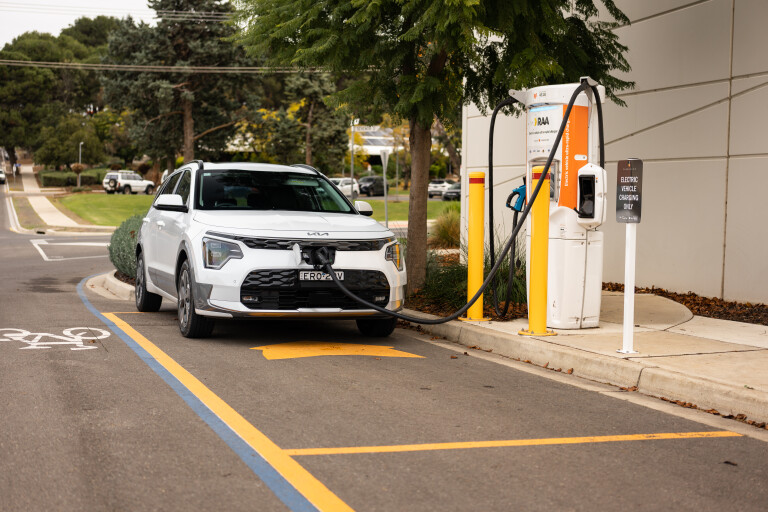
🔌 Charging power (kW) and force (V)
Electricity’s physics and behaviour is similar to a water hose. Current (measured in amps) is like the water’s flow speed and quantity, while voltage is more like the water’s pressure.
That’s the secret to the circa-20 minute rapid charging times of models, such as the Hyundai Ioniq 5, Kia EV6, and Porsche Taycan. Unlike most other EVs, which use up to 400 volts, they adopt a more advanced 800-volt class battery architecture.
It means the ‘pressure’ of current (measured in amperage) of charging electrons into the battery is higher, enabling more driving range to be pushed into the cells in a shorter time. It also generates less heat, enables thinner charging cables, and has performance driving advantages when discharging, too.
🤔 400 vs 800-volts: What’s the difference?
Standard 400-volt class EVs, such as long range battery Tesla Model Y, Polestar 3, and Volvo EX90 can also reach ultra-rapid 250kW DC speeds – so what’s the difference?
They require pulling more current, which generates more heat – and could trigger the BMS to throttle the charging power quicker – resulting in a theoretically slower charge time overall than an 800-volt class EV.
An 800-volt class battery architecture allows for sustained high charging speeds for longer over time – even when connected to a more common 400-volt based DC charging station (after conversion).
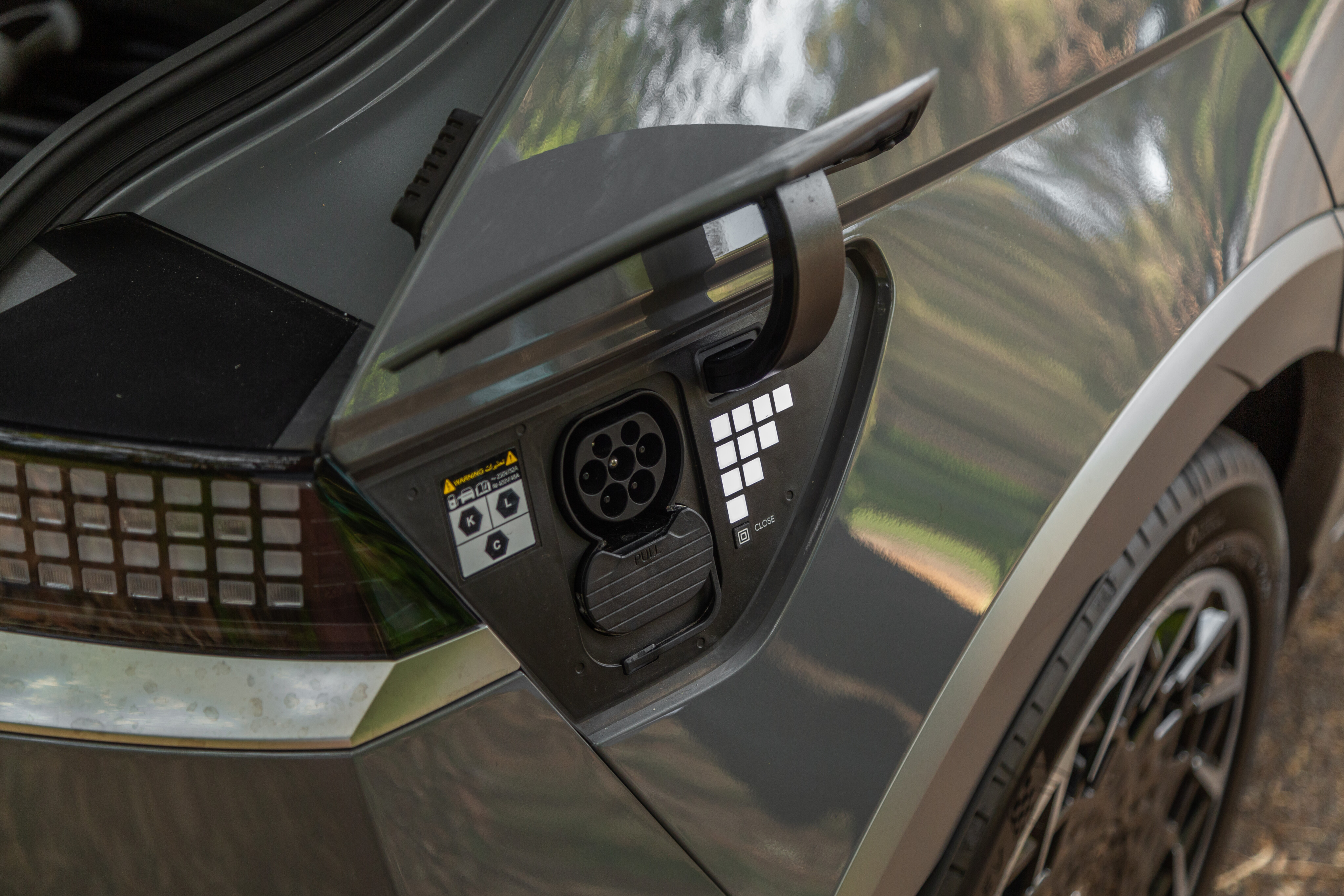
⏱️ How to achieve maximum fast charging speeds
- Use a compatible public DC fast charging station that outputs the same or more than the EV model’s peak DC capability
- Plug in from a low battery percentage, in warm weather and drive a bit before arriving at the station
- On equipped EV models, enable the battery preconditioning function (usually via the built-in maps) to actively heat up the battery before arriving
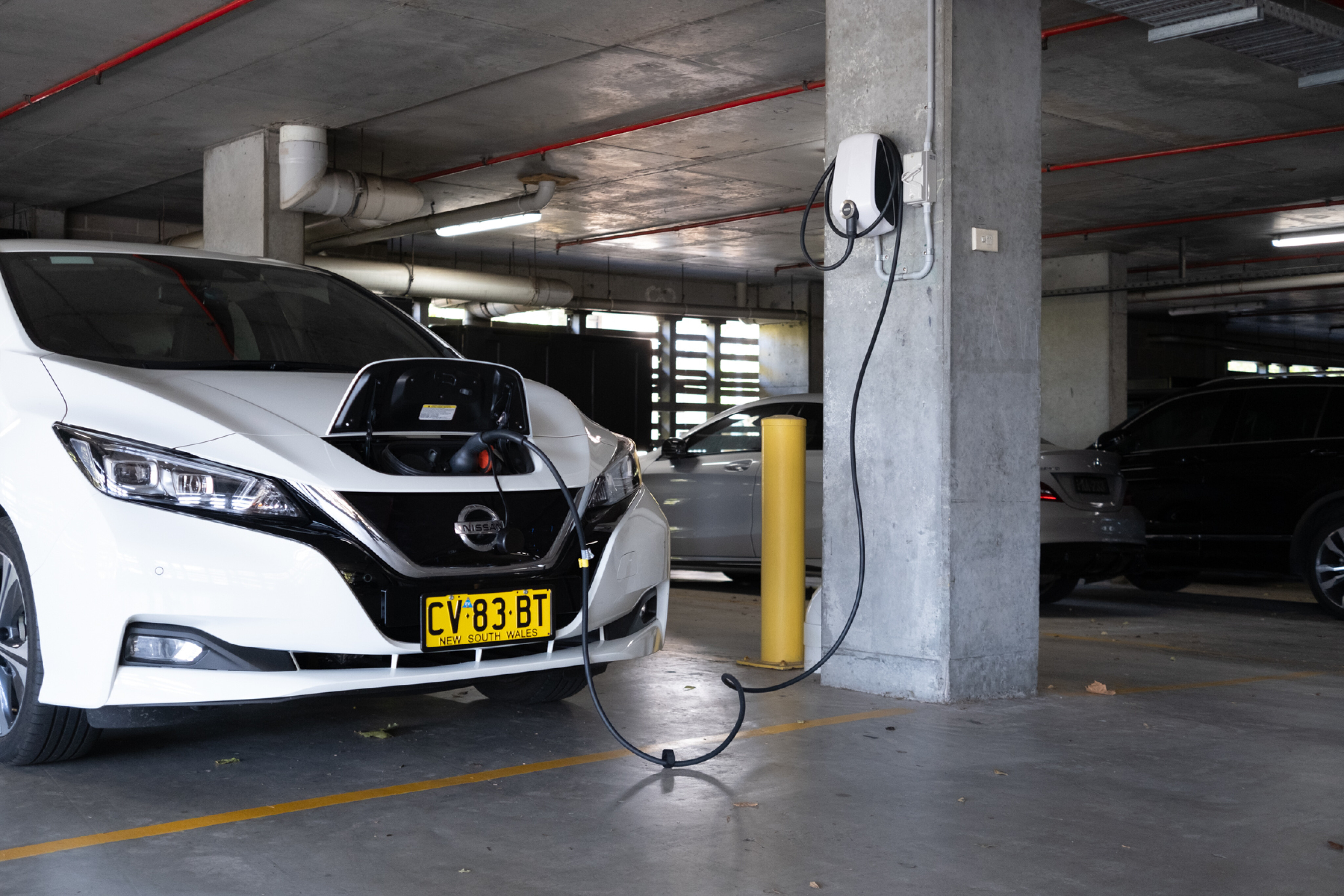
AC⚡DC
EV charging is separated by slow AC charging and fast DC charging speeds – which is limited by the power source and model’s maximum capabilities.
Plug your smartphone at night and it will be ready for another day’s use the following morning. It’s a similar routine for electric cars – if you can (ideally) plug in at home.
If an EV provides more than enough range for your daily needs (200 to 600km depending on the model), then you only need to replenish enough for the next day via a three-pin trickle charging cable.
After all, you don’t need to always fully fill up a fuel tank – the average Australian only drives between 30 to 40km per day.
This is the most basic method and can recharge up to 80 per cent in around two to four full nights depending on the model.
Audi's head of charging development, Silvia Gramlich, told WhichCar that the crucial question for EV buyers is: “How many kilowatt hours can I recharge in what period of time?”
However, if you need the guarantee of a full charge every day, then you’ll need to install a Level 2 7kW single-phase or 11kW three-phase AC wall box charger.
Though, the limiting factor is still alternating current (AC) power – volts and amps. EV batteries need to store energy as direct current (DC) and uses a built-in AC to DC inverter.
That’s why almost every EV model offers DC charging, which is substantially faster without the need to convert energy. DC charging is only found at public stations, where a quick top-up is most suited.
Just how fast depends on the charging power limits of the charging station output (generally between 50kW to 350kW DC) and the EV model input, as detailed here.
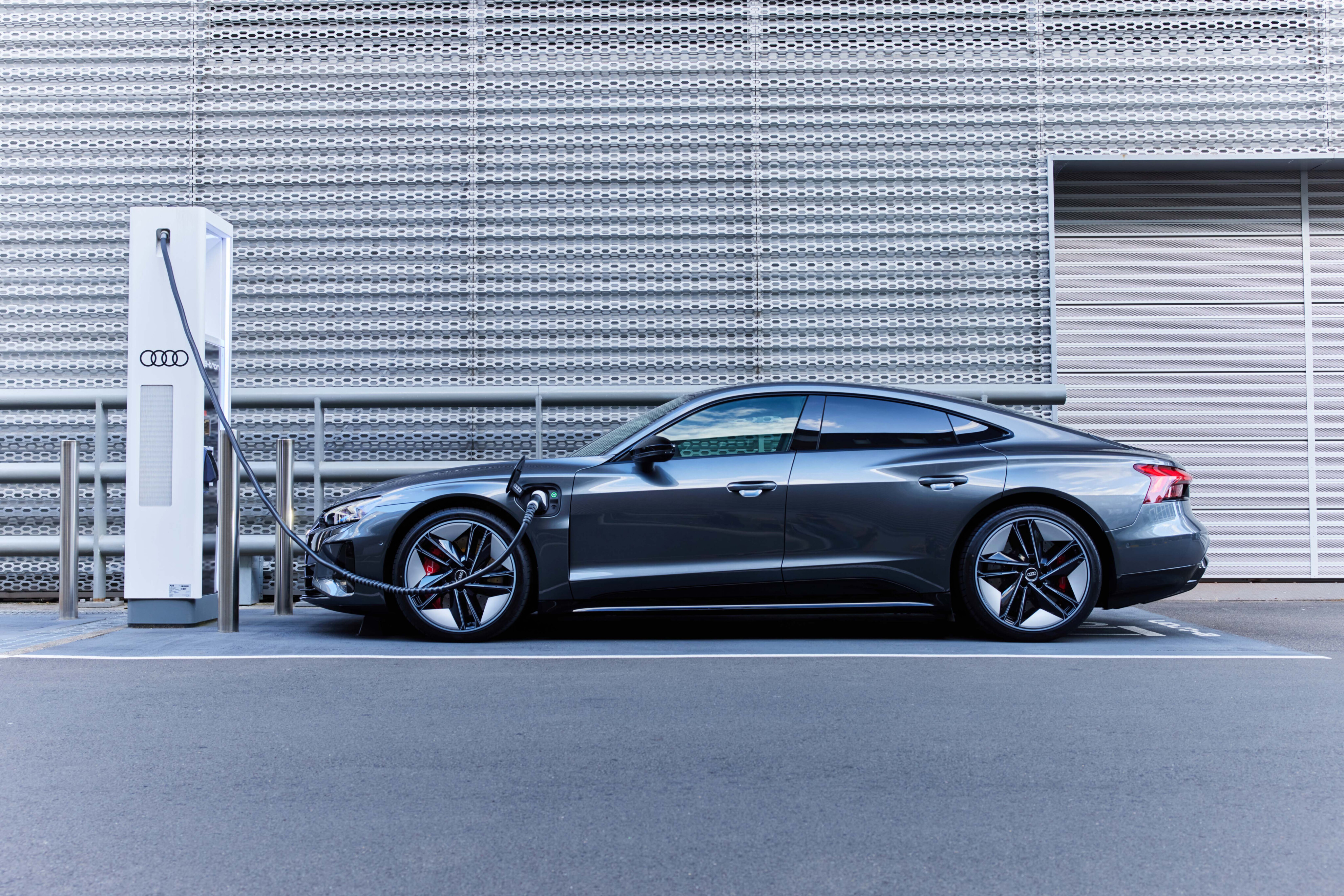
⏰ In 30 minutes or less, I'm free...
These EVs boast a claimed 10 to 80 per cent charge time of 30 minutes or less.
Some models below also demonstrate a high charge rate doesn’t always mean quick charging times – a small battery with a decent enough 100kW DC speed could be faster to replenish than a large battery on a 350kW ultra-rapid rate.
- Hyundai Ioniq 5
- Hyundai Ioniq 6
- Kia EV6
- Genesis Electrified GV60
- Genesis Electrified GV70
- Genesis Electrified G80
- Tesla Model 3
- Tesla Model Y
- Audi E-Tron GT
- Porsche Taycan
- BMW iX1
- Cupra Born
- MG 4 (Excite/Essence 64 only)
- Volvo EX30
- Volvo XC40 Recharge (Twin Motor Ultimate only)
- Volvo C40 Recharge (Twin Motor Ultimate only)
- Polestar 2 (Long Range variants only)
- Polestar 3
- Peugeot E-2008
- Peugeot E-Partner
🤔 How long does it take to charge an EV and how much?
This story focuses on the fastest-charging EVs, but does it generally take too long to charge an EV and how much does it all cost? Check out our detailed explainers below.
🔋 Every fastest-charging EV in Australia, by max DC rate
Figures below are claimed by the manufacturer and apply to all model variants, unless otherwise stated. Real-world charging times will vary depending on the charging station output, charging losses, BMS, battery temperature and percentage.
*While the Hyundai Motor Group claims a 350kW DC peak for its 800-volt class based EVs, real-world tests consistently observe a maximum rate of around 240kW instead.
**Usable battery size according to EV Database [↗] since Tesla does not disclose battery sizes.
| Model | Usable battery size | Max slow charge speed (AC) | Max fast charge speed (DC) |
|---|---|---|---|
| Genesis GV60 | 74kWh | 10.5kW | 350kW* |
| Genesis Electrified GV70 | 74kWh | 10.5kW | 350kW* |
| Genesis Electrified G80 | 82.5kWh | 10.5kW | 350kW* |
| Hyundai Ioniq 5 | 74kWh | 10.5kW | 350kW* |
| Hyundai Ioniq 6 | 74kWh | 10.5kW | 350kW* |
| Kia EV6 | 74kWh | 10.5kW | 350kW* |
| Audi E-Tron GT | 85kWh | 11kW | 270kW |
| Porsche Taycan GTS/ Turbo/Turbo S | 83.7kWh | 22kW | 270kW |
| Porsche Taycan Cross Turismo 4/4S/Turbo | 83.7kWh | 22kW | 270kW |
| Polestar 3 | 107kWh | 11kW | 250kW |
| Tesla Model 3 Long Range/Performance | 75kWh** | 11kW | 250kW |
| Model Y Long Range/Performance | 75kWh** | 11kW | 250kW |
| Porsche Taycan base/4S | 71kWh | 11kW (22kW optional) | 230kW |
| Polestar 2 Long Range Single Motor/Dual Motor | 79kWh | 11kW | 205kW |
| BMW i5 | 81.2kWh | 22kW | 205kW |
| BMW i4 | 80.7kWh | 11kW | 200kW |
| BMW i7 | 101.7kWh | 11kW | 200kW |
| BMW iX xDrive40/xDrive40 Sport | 71kWh | 11kW | 200kW |
| BMW iX xDrive50 Sport/M60 | 105.2kWh | 11kW | 200kW |
| Mercedes-AMG EQS 53 liftback | 107.8kWh | 11kW (22kW optional) | 200kW |
| Volvo XC40 Recharge Twin Motor Ultimate | 79kWh | 11kW | 200kW |
| Volvo C40 Recharge Twin Motor Ultimate | 79kWh | 11kW | 200kW |
| Audi E-Tron 50 | 64.7kWh | 11kW | 170kW |
| Audi E-Tron 55/S | 86.5kWh | 11kW | 170kW |
| Cupra Born | 77kWh | 11kW | 170kW |
| Mercedes-Benz EQE 300 sedan | 89kWh | 11kW (22kW optional) | 170kW |
| Mercedes-Benz EQE 350 4Matic/AMG EQE 53 sedan | 90.5kWh | 11kW (22kW optional) | 170kW |
| Tesla Model 3 RWD | 57.5kWh** | 11kW | 170kW |
| Tesla Model Y RWD | 57.5kWh** | 11kW | 170kW |
| Volvo EX30 | 64kWh | 11kW | 153kW |
| BMW iX3 | 74kWh | 11kW | 150kW |
| Ford Mustang Mach-E Select | 71kWh | 11kW | 150kW |
| Ford Mustang Mach-E Premium/GT | 91kWh | 11kW | 150kW |
| Lexus RZ | 64kWh | 11kW | 150kW |
| MG 4 Excite/Essence 64 | 61.7kWh | 6.6kW | 140kW |
| MG 4 Long Range 77 | 77kWh | 11kW | 140kW |
| Polestar 2 Standard Range Single Motor | 67kWh | 11kW | 135kW |
| BMW iX1 | 65kWh | 22kW | 130kW |
| Volvo XC40 Recharge Single Motor Plus | 66kWh | 11kW | 130kW |
| Volvo C40 Recharge Single Motor Plus | 66kWh | 11kW | 130kW |
| LDV Mifa 9 | 90kWh | 11kW | 120kW |
| Ford E-Transit | 68kWh | 11kW | 115kW |
| Mercedes-Benz EQV | 90kWh | 11kW | 110kW |
| Jaguar I-Pace | 84.7kWh | 11kW | 100kW |
| Mercedes-Benz EQA | 66.5kWh | 11kW | 100kW |
| Mercedes-Benz EQB | 66.5kWh | 11kW | 100kW |
| Mercedes-Benz EQC | 80kWh | 11kW | 100kW |
| Nissan Leaf e+ | 59kWh | 7kW | 100kW |
| Peugeot E-2008 | 46.3kWh | 11kW | 100kW |
| Peugeot E-Partner | 46.3kWh | 11kW | 100kW |
| MG 4 Excite 51 | 50.8kWh | 6.6kW | 88kW |
| Fiat 500e | 37.3kWh | 11kW | 85kW |
| Kia Niro EV | 64.8kWh | 11kW | 84kW |
| BYD Atto 3 Extended Range | 60.48kWh | 7.4kW | 80kW |
| BYD Dolphin Premium | 60.48kWh | 7kW | 80kW |
| GWM Ora Standard Range | 45.4kWh | 11kW | 80kW |
| GWM Ora Extended Range/Ultra/GT | 59.3kWh | 11kW | 80kW |
| LDV eT60 | 88.55kWh | 11kW | 80kW |
| LDV eDeliver 9 Cab Chassis | 65kWh | 11kW | 80kW |
| LDV eDeliver 9 LWB Mid/High Roof | 88.55kWh | 11kW | 80kW |
| Mercedes-Benz eVito panel van | 60kWh | 11kW | 80kW |
| Mercedes-Benz eVito Tourer | 90kWh | 11kW | 80kW |
| MG ZS EV Essence | 49kWh | 11kW | 80kW |
| MG ZS EV Long Range | 68.3kWh | 11kW | 80kW |
| BYD Atto 3 Standard Range | 49.92kWh | 7.4kW | 70kW |
| BYD Dolphin Dynamic | 44.9kWh | 7kW | 60kW |
| Lexus UX300e | 64kWh | 6.6kW | 50kW |
| Mini Cooper SE | 28.9kWh | 11kW | 50kW |
| Nissan Leaf | 39kWh | 7kW | 50kW |
| Mazda MX-30 Electric | 30kWh | 6.6kW | 50kW |
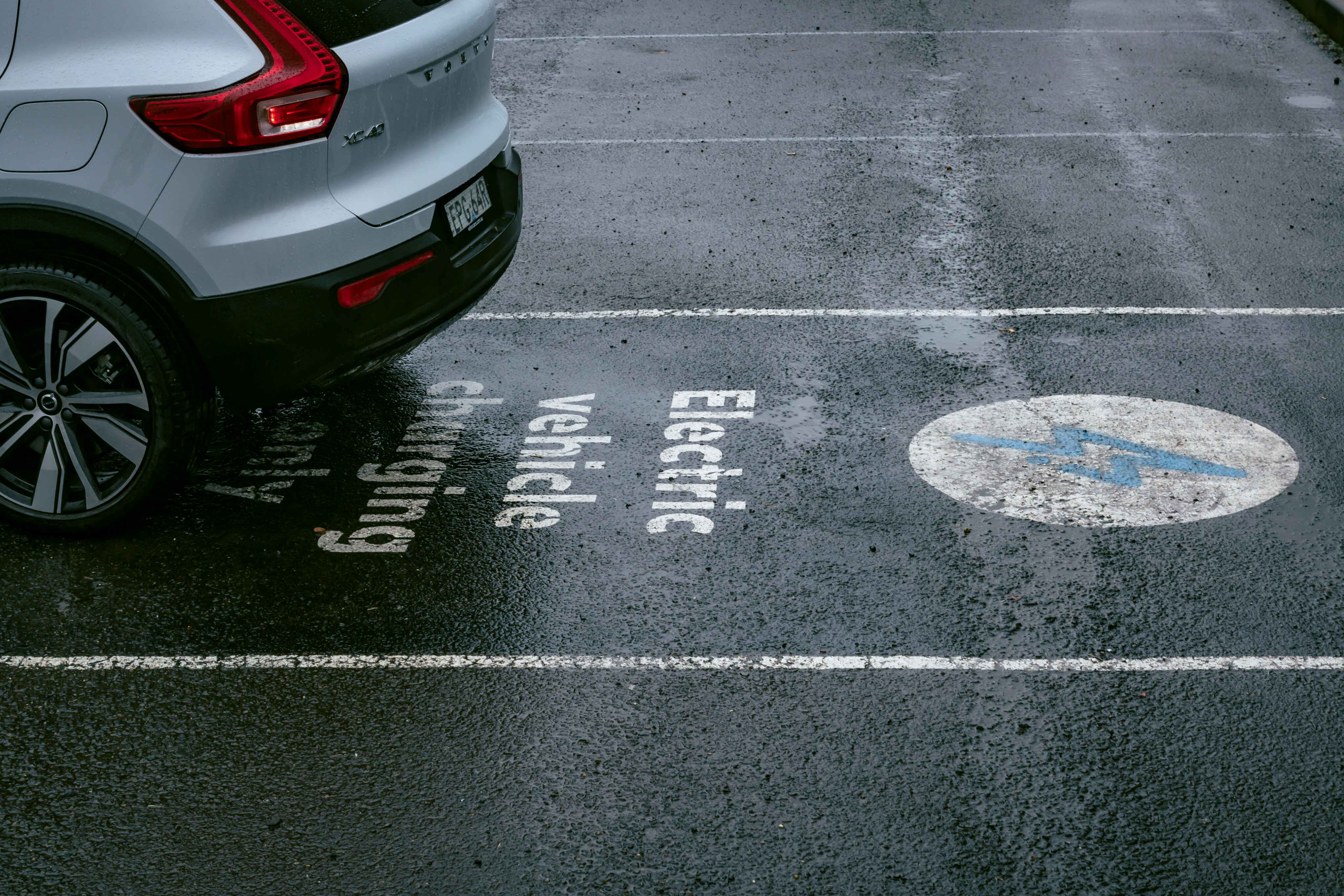
💯 Knowledge is power
Just as you should when considering any car purchase, arm yourself with the relevant information and have a list of all the things you need in your next electric car.
Get your head around battery sizes in kWh, find out the AC/DC charging capabilities for the particular model you're interested in as above, and determine whether you can charge at home and locate where public charging stations are using platforms, such as PlugShare [↗].
Of course, charging speed isn’t everything. If you plug in at home or work overnight, then you don’t need to charge so quickly – and frequent fast charging is unhealthy for batteries in the long-run.
Energy efficiency and driving range, features, practicality and aftersales provisions are also important, so a little research will enable you to find the perfect EV to fit your needs. For more, check out our comprehensive EV guides below.
More EV stories to help you choose the best car for your needs
🚘 EV news, reviews, advice & guides
- ❓ Short & sweet: Your EV questions answered
- ⚡ New EVs: Everything coming to Australia
- 🥇 Australia's EVs with the longest driving range
- ⚖️ Best-value EVs by driving range
- 💰 How much do EVs cost in Australia?
- 😰 How much more expensive are EVs?
- ⚖️ Number crunching: Is it time to switch to an EV?
- ♻ Should you buy a used EV?
- 🛡️ Are EVs more expensive to insure?
- 🆚 Costs compared: Charging an EV vs fueling a car
- 📖 EV charging guide
- 🚧 Are there enough EV chargers in Oz?
- 👨🔧 EV servicing explained
- 🔋 EV battery types explained
- 🪫 When do EV batteries need replacing?
- 🆚 Hydrogen v EVs: What's best for Oz?
- ✋🏻 Mind your manners! EV charging etiquette tips
- 🌏 How sustainable are EVs, really?
MORE advice stories to help you with buying and owning a car
Wheels Media thanks Daniel Gardner for the original version of this story.
COMMENTS